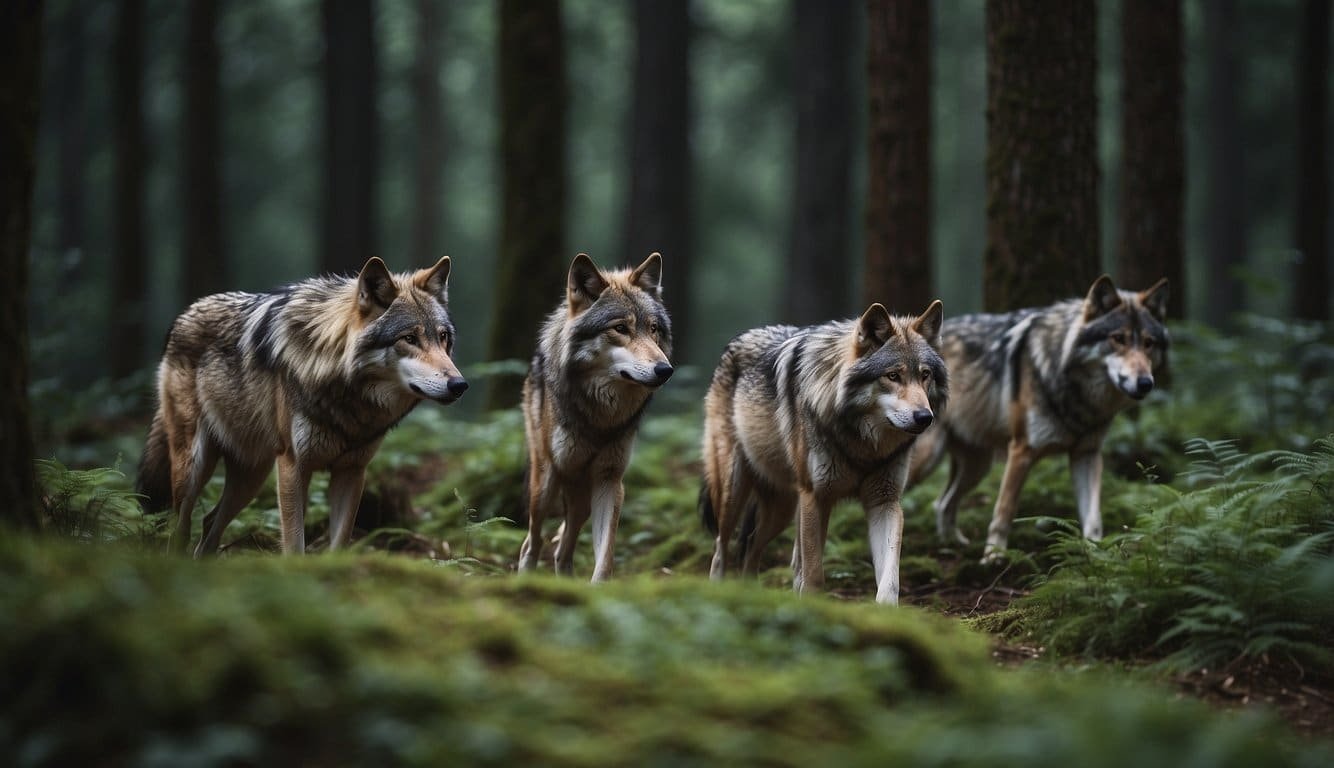Overview of Endangered Wolves
Wolves have long roamed the wild landscapes of our planet, capturing the imagination and stirring awe in those who glimpse their shadowy figures. Among them, the gray wolf once thrived across North America but now wears the mantle of an endangered species due to habitat loss and human conflict.
Today, the red wolves and Mexican gray wolves are among the most endangered canids in the world. With numbers dwindling, these elusive creatures have become emblematic of conservation efforts. For instance, red wolves, which currently roam the southeastern United States, have seen their populations plunge over the past century.
Population figures are a testament to the effectiveness of conservation measures under the Endangered Species Act (ESA). The act has provided these canine icons with a fighting chance for recovery. The U.S. Fish and Wildlife Service has been at the forefront, collaborating with various stakeholders to orchestrate the rebound of these species through captive breeding and reintroduction programs which have been somewhat successful for the gray wolf in certain regions.
Federal protection has been pivotal to these efforts, essentially shielding wolves from further decline. However, continued support for these protective measures is a subject of ongoing debate and political maneuvering. Advocates argue that maintaining federal protection is essential for continued recovery, while opponents cite economic and safety concerns as reasons for a laxer approach.
Table: Current Status of Endangered Wolves in North America
| Species | Estimated Population | Range |
|---|---|---|
| Gray Wolf | Over 6,000 (lower 48 states) | Northern Rockies, Great Lakes, Pacific Northwest |
| Red Wolf | Less than 35 (wild) | North Carolina |
| Mexican Gray Wolf | Approximately 150 | Southwestern U.S. and Mexico |
Conservation of these enigmatic predators remains a delicate balance of coexistence with human interests. Their continued presence on the landscape serves as a measure of our willingness to share our environment with the wild heart of nature. For more captivating details about the ESA and wolf conservation, you can unmask the intricacies of these protective measures through the available academic research.
Threats and Conservation Challenges

Endangered wolves face a myriad of pressures that threaten their survival and complicate their recovery. Each challenge interweaves with the others, creating a complex puzzle for conservationists to solve.
Habitat Destruction and Human Impact
Wolves require large territories to thrive, but expanding human development has led to significant habitat loss. As wildlands give way to agriculture and urban sprawl, vital ecosystems are fragmented. In places like Yellowstone National Park, careful measures are taken to safeguard wolf habitats, yet outside these protected areas, the encroachment of humans continues to erode their natural environment.
Legal and Illegal Killing
Despite protective measures, wolves are still victims of hunting and trapping. In regions where they are no longer listed as endangered, management policies may allow for controlled hunting. However, illegal killing remains a persistent threat. Ranchers may kill wolves to protect livestock, and these acts are often fueled by human intolerance towards what’s perceived as a dangerous predator.
Species-Specific Issues and Management
Wolves are a focal species in the debate over conservation and delisting criteria under the Endangered Species Act. The gray wolf’s recovery, particularly in the Northern Rocky Mountains, brings to light the challenge of managing both the species and public perception. Ensuring the long-term survival of wolves means not only addressing direct threats but also fostering a coexistence between wolves, their ecosystem, and the communities that border their habitat.
Recovery Efforts and Success Stories

Recovery efforts and success stories of endangered wolves have seen a blend of dedicated reintroduction programs, robust legal frameworks, and active community engagement. Spanning across regions, from the northern Rockies to the Southwest, these initiatives leverage scientific research to bolster populations of these apex predators.
Reintroduction Programs
The Yellowstone reintroduction is a prime example where wolves were once completely eradicated but have rebounded since their return in the mid-1990s. In Isle Royale, a careful transplantation of wolves is helping to restore ecological balance. Meanwhile, states like Arizona and New Mexico witness similar success through their management of the Mexican gray wolf populations.
Legal Protections and Policies
Federal protections under acts such as the Endangered Species Preservation Act have provided a crucial safety net for wolves. Court rulings, sometimes driven by organizations like Earthjustice, often play a pivotal role by challenging policies particularly during changes from the Trump administration to the Biden administration. The shifting dynamics of state management and federal protections are a continuing saga in the preservation of wolves.
Community Involvement and Education
Engaging local communities in states like Oregon, California, and North Carolina has led to increased awareness and education. Wolf advocates collaborate with residents to share the intrinsic value these large carnivores bring to ecosystems. These programs often aim to find a harmonious balance between human activities and wolf conservation efforts.
For further detail on each of these topics, one might explore the multifaceted approaches to wolf recovery discussed in various literature or consider the case of the Northern Rocky Mountain Wolf Recovery Plan which outlines the intricate processes behind legal and ecosystem management for wolves. Additionally, an analysis of the challenges and opportunities in recovering wolf populations sheds light on the nuanced aspect of species legislation and its impact on these creatures. To understand the importance of wilderness in the context of endangered species, one can refer to insights on restoring endangered species and the many layers of efforts that go into these endeavors. Finally, the argument for maintaining Endangered Species Act protections for wolves reveals the continued need for vigilance in conservation campaigns.

